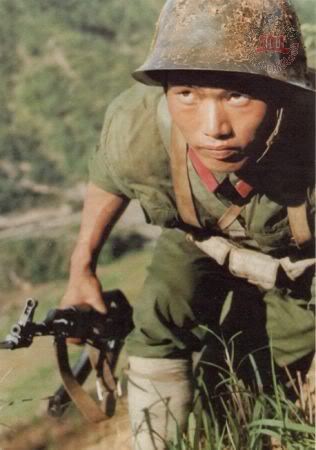
“Throughout the 1950s, both Cold War superpowers were engaged in an explosive game of one-upmanship to see which country could develop the largest nuclear weapon. This new Russian warhead ended that contest in a blinding flash.”
AT PRECISELY 11:32 a.m. on Oct. 30, 1961, the sky above the Russian Arctic lit up brighter than the sun.
The blinding flash was followed by a deafening boom that rocked much of the northern hemisphere shattering windows from Norway to Siberia. In an instant, a seismic shockwave emanating from the northern U.S.S.R. spread out across the planet like ripples on the surface of a pond. The vibrations would circle the globe three times before finally subsiding.
Within the hour, an enormous plume of smoke about the size of Rhode Island had risen above Novaya Zemlya on the Barents Sea. The cloud eventually climbed to 200,000 feet – seven times higher than Mount Everest. It was visible for hundreds of miles in all directions.
Although millions of people experienced the event, only a handful knew for sure its exact cause: It was a test detonation of the Soviet AN602 hydrogen bomb – the single most destructive weapon in human history.

The King of Bombs
Codenamed Vanya or Big Ivan, the staggering 58-megaton nuclear warhead was developed in just four months as a response to America’s massive 25-megaton B41 bomb. Moscow unofficially dubbed the new super weapon Kuz’kina Mat in reference to a folksy if not cryptic Russian saying that roughly translates into English as: “I’ll show you Kuzka’s mother” — similar to the expression “I’ll show you.” [1] Others simply called it the Tsar Bomba meaning “king of bombs.”
Throughout the 1950s, both superpowers were engaged in an explosive game of one-upmanship to see which could develop the largest nuclear weapon. This new Russian warhead ended that contest in a blinding flash.
The bomb itself was 26 feet long and nearly seven feet across. Its 27-metric ton mass was originally designed to produce a blast equivalent of 3,000 Hiroshima bombs — that’s 10 times more firepower than all of the explosive ordnance unleashed in the whole of the Second World War. [2]
The Tsar Bomba was so massive, it had to be carried aloft by a specially modified Tu-95 Bear bomber. In order to make room for the weapon, the colossal aircraft’s bomb bay needed to be extended and much of the plane’s internal fuel tanks had to be removed. The four-engine turbo-prop was also treated with special heat reflecting paint to limit damage to the aircraft from the massive flash of the explosion.

Put to the Test
On the day of the test, the reconfigured Bear carried the AN602 to an altitude of more than 30,000 feet before releasing it over the isolated Mityushikha Bay weapons range. In order to give the aircrew time to escape the blast radius, a massive parachute deployed from the bomb casing to slow the weapon’s fall. Once released, the device gently descended to 12,000 feet before detonating.
The flash from the explosion was visible for 270 km (about 150 miles) while the enormous fireball rose to 30,000 feet and was seen in settlements as far away as 700 km (nearly 450 miles). Buildings hundreds of kilometres from the testing range were pulled from their foundations or had their roofs torn off. The entire town of Severny on Novaya Zemlya was completely flattened by the concussion from the detonation. The heat wave from the explosion was enough to cause third degree burns to human skin as far away as 100 km (60 miles) and the electromagnetic energy generated by the event crippled communication in the northern Soviet Union for more than an hour. [3] The plane that dropped the bomb was slammed with a shockwave so violent the aircraft instantly plummeted 3,000 feet in the suddenly unstable air — this despite the fact that it had managed to travel 45 km from ground zero before detonation.

Fallout
Western intelligence detected the explosion and codenamed the event Joe 111.
Amazingly, Soviet engineers initially planned for the Tsar Bomba to create an explosion twice as large, but ratcheted back the weapon’s yield after realizing that a bigger detonation would have blanketed much of the Soviet Union in deadly fallout.
Yet even with the reduced strength, the 58-megaton bomb was still too large to be militarily practical. Aside from the planet-destroying damage even a handful of the weapons would cause, the immense bulk of the warhead made it too heavy to be fitted to the top of any missile in the Soviet arsenal. And while AN602 bombs could be loaded aboard modified Bear bombers, the aircrafts’ range and speed would be so compromised it’s doubtful if they could ever reach the United States with their super-sized payloads.
Not surprisingly, the Soviets never put the weapon into production and eventually had to settle for the 25-megaton SS-18 ICBM. Before the end of the Cold War, Moscow ordered the construction of some 300 of the deadly silo-busting weapons. Russia still maintains approximately 40 of the warheads.
While the death toll of the single Tsar Bomba detonation hasn’t been made public, many observers have pointed out that some good did come out of the event. The explosion, and growing concerns over the fall out from similar detonations, led to the Partial Nuclear Test Ban Treaty of 1963. Future explosions would be carried out underground.
Sources:
http://en.wikipedia.org/wiki/Tsar_Bomba
http://www.damninteresting.com/the-most-powerful-bomb-ever-constructed/
http://www.tsarbomba.org
http://www.pbs.org/wnet/secrets/featured/the-world’s-biggest-bomb-about-this-episode/846/












Finland say: Our, My president: Finland is a part of western society. Russia is our neighbor and will be. Some day a russian in a Jaroslavl street ask a question.
“What is my capital city?”
Today it is Moscow… One day It is Helsinki.
Washington,DC
CALIFORNIA US